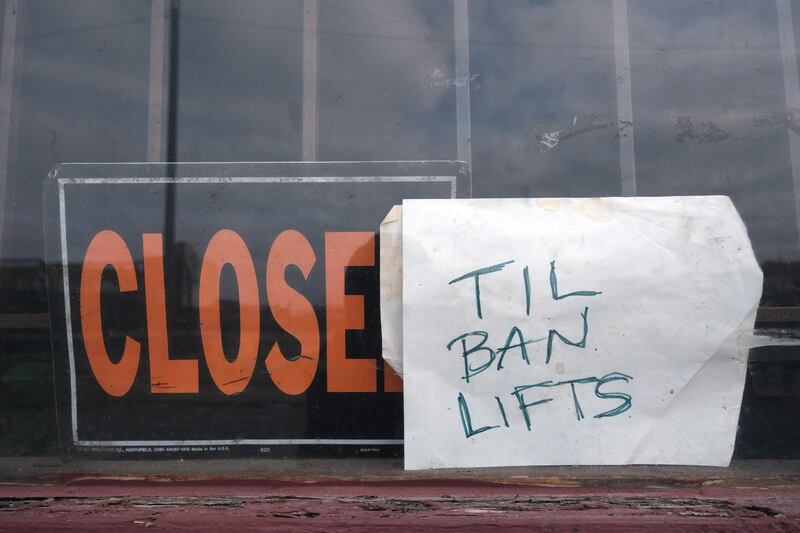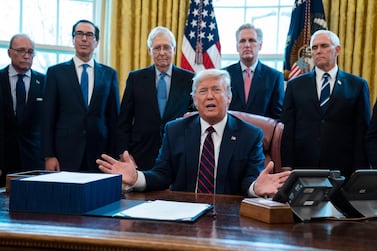Adding trillions of dollars of borrowing to the US national debt is necessary fiscal support because of coronavirus-related shutdowns and would not hamper the country’s ability to grow in the future, Federal Reserve Bank of St. Louis President, James Bullard, said.
“We are taking it on at very low interest rates,” Mr Bullard said in a Bloomberg interview, noting that rates will “probably stay very low for quite a while.”
“It is a big country. We can carry 10 per cent more debt. It is not ideal but we can certainly do it. And if there was ever a time where you wanted to do something like this, now is that time.”
President Donald Trump on Friday signed a $2 trillion (Dh7.34tn) fiscal package to protect the economy as American households and businesses hunker down from the spreading virus. On Sunday he warned the nation that 100,000 or more may may die as the White House extended guidelines on “social distancing” until April 30.
The Fed has slashed interest rates to almost zero and pumped hundreds of billions of dollars into credit markets to ensure they continue to function and tide the economy over as it endures the pandemic.
Mr Bullard, who has estimated the jobless rate would rise to around 30 per cent and GDP output would halve in the second quarter, said there is much uncertainty around that estimate.
Unemployment — which matched a 50-year low of 3.5 per cent in February — could surge to at least 10 per cent or go as high as 42 per cent, he said. That’s based on the number of workers in industries vulnerable to virus-related shutdowns in which people work in close contact with each other, such as restaurants, hotels and many other service businesses.
Much depends on how many businesses retain workers by taking advantage of federal pandemic relief programmes to ensure they keep their workers on the payroll for when the crisis is over, Mr Bullard said.
By laying off employees, “they might lose the connection with their workers”, he said. By applying for forgivable Small Business Administration loans, “you might be able to retain all of your workers and then when the start-up occurs later, you will be able to have the same workers and you do not have to hire all over again".
“If companies decide to do that, we will see lower unemployment and more uptake” on small-business loans.







